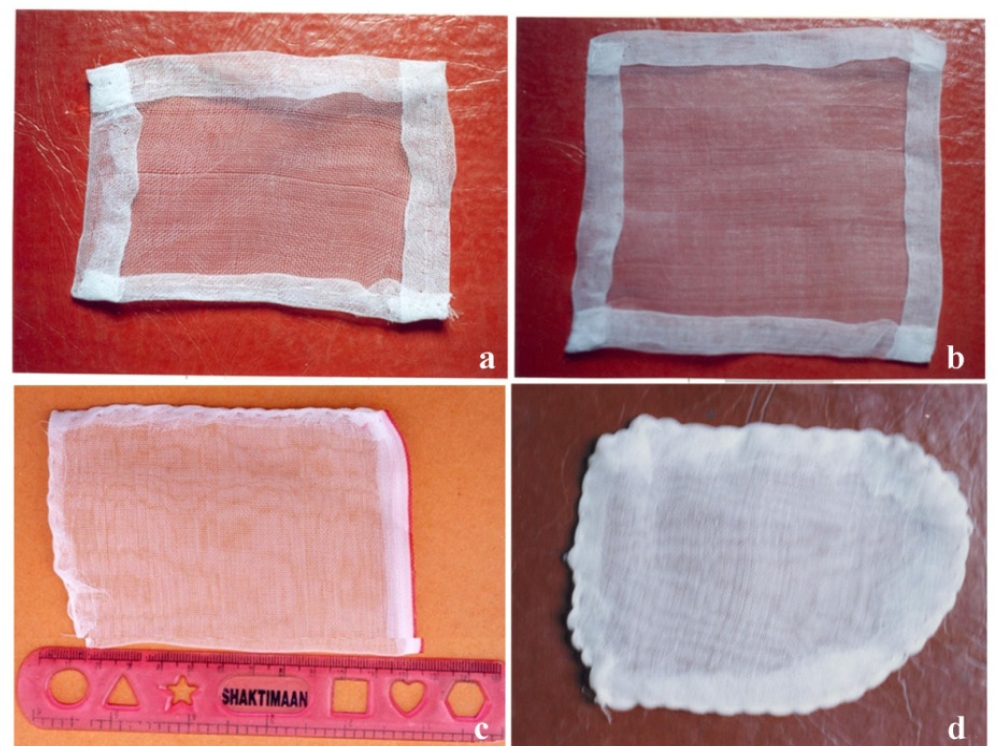Polypropylene mesh versus nylon mosquito net mesh for external abdominal hernias repair in cattle and buffaloes
DOI:
https://doi.org/10.56825/bufbu.2023.4233546Keywords:
Bubalus bubalis, buffaloes, nylon mosquito net mesh, polypropylene mesh, external abdominal wall hernias, cattleAbstract
Herein, the effectiveness of locally sourced and autoclaved nylon mosquito net mesh for the repair of external abdominal hernias was investigated. Eleven animals (7 cattle and 4 buffaloes) having hernial ring sizes of 8 to 30 cm in diameter were divided into two Groups 1 (5 animals) and Group 2 (6 animals). In Group 1, nylon mosquito net mesh was used, and in Group 2, polypropylene mesh was used for the repair of defects. The animals were sedated with xylazine HCl and given local anaesthesia during surgery. Over the external hernial sac, an elliptical skin incision was made. The internal hernial sac was bluntly dissected and freed down to the hernial ring. The internal hernial sac was opened, and the hernial ring was repaired with nylon mosquito net mesh or polypropylene mesh using the inlay technique. After hernioplasty, the sac and subcutaneous tissue were repaired with prolene suture material. The skin incision was closed with simple interrupted mattress sutures using monofilament polyamide suture material. Antibiotics and analgesics were given postoperatively, and povidone iodine was used to treat the suture line daily. The skin sutures were removed on the 10th to 15th postoperative day, depending upon the wound condition. Mild inflammatory swelling in Group 1 was observed at the incision line, which had completely subsided by the 15th postoperative day. The wounds healed by first intention in both groups. In any case, no recurrence was seen in a follow-up period of 3 months. Without clinical signs of wound dehiscence, infection, or recurrence, all animals recovered uneventfully.
Downloads
Metrics
References
Bouisset, S., I. Daniaud and H. Giron. 1982. Nylon mesh in surgical repair of hernias in cattle. Point Veterinarian, 14: 47-50.
Burger, J.W., R.W. Luijendijk, W.C. Hop, J.A. Halm and E.G. Verdaasdonk. 2004. Long-term follow-up of a randomized controlled trial of suture versus mesh repair of incisional hernia. Ann. Surg., 240(4): 578-583. DOI: 10.1097/01.sla.0000141193.08524.e7
Freudenberg, S., D. Sano, E. Ouangre, C. Weiss and T.J. Wilhelm. 2006. Commercial mesh versus nylon mosquito net for hernia repair. A randomized double-blind study in Burkina Faso. World J. Surg., 30(10): 1784-1789. DOI: 10.1007/s00268-006-0108-3
Kanade, M.G., A. Kumar and S.N. Sharma. 1988. Repair of abdominal defects by stainless steel and nylon mesh implants in buffaloes. Indian J. Anim. Sci., 58: 415-419.
Kingsnorth, A. and K.A. LeBlanc. 2003. Hernias: Inguinal and incisional. Lancet, 362(9395): 1561-1571. DOI: 10.1016/S0140-6736(03)14746-0
Kumar, N., P. Kinjavdekar, H.P. Aithal, Amarpal and A.M. Pawde. 2002. Surgical management of unusual large hernia with nylon mesh: A report of two cases. Intas Polivet, 3(1): 86-87.
Kumar, N., A.K. Sharma, T.B. Singh, O.P. Gupta and J. Singh. 2003. Successful repair of large ventral hernia using nylon mesh in a crossbred female calf. In Proceedings of 27th Indian Society of Veterinary Surgery Annual Conference, Pantnagar, India. p. 53-54.
Oribabor, F.O., A.A. Oluwasegun, S.O. Akanni and S.O. Fatidinu. 2015. The Use of nontreated mosquito-net mesh cloth for a tension free inguinal hernia repair: Our experience. Nigerian Journal of Surgery, 21(1): 48-51. DOI: 10.4103/1117-6806.152726
Varshney, A.C. and B. Singh. 1991. Surgical management of ventral hernia with nylon mesh prostheses in a buffalo heifer. Indian Vet. Med. J., 15: 65-66.
Wilhelm, T.J., S. Freudenberg, E. Jonas, R. Grobholz, S. Post and P. Kyamanywa. 2007. Sterilized mosquito net versus commercial mesh for hernia repair: An experimental study in goats in Mbarara/Uganda. Eur. Surg. Res. 39(5): 312-317. DOI: 10.1159/000104402
Wintzer, H.J. 1962. Methods of surgical treatment for bovine abdominal hernias. J. Am. Vet. Med. Assoc., 141: 131-134.









.png)








